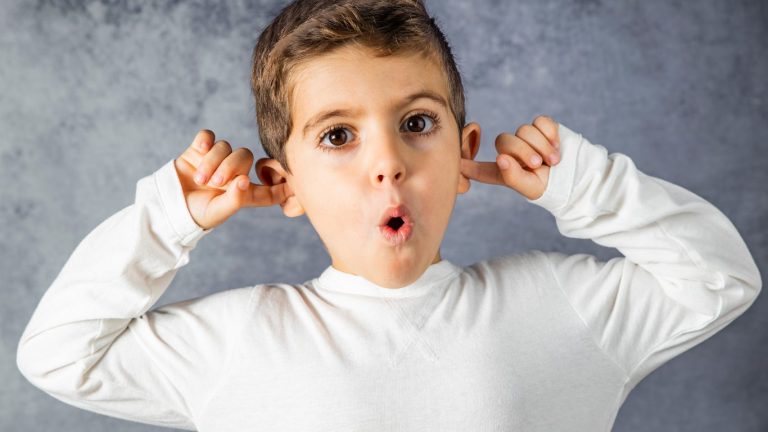Ever find yourself in a situation where your toddler is nearing meltdown mode, hyperventilating, panicking, losing all control? Teaching your toddler deep breathing may be the answer.
We went searching for tools to help our toddler keep calm when things get ‘a bit much’ for her, and we discovered the concept of deep breathing. Teaching your toddler deep breathing could be just the answer for you too.
Finding the calm
Our 3 year old suffers from asthmatic symptoms, particularly when she has a cold. She tends to go downhill quickly and is quite often visiting the GP for medication. It can be tiring for both us and her, and it stops her from being able to be the happy active toddler she loves to be.
So on top of regular GP checkups, we are always looking for ways to help her. One issue she has is when she gets worked up (tears, tantrums, shortness of breath all included), she vomits. And believe me – cleaning up vomit all the time sucks.
What I needed was a way to calm her down before she reaches that point of vomiting. I needed to cut it off early. So I decided to teach her to calm herself with deep breathing.
Why do it?
Deep breathing has always been identified as a relaxation technique. It removes us from the ‘fight or flight’ state of mind and brings us back to focus and relaxation, neutralising the stress in our bodies.
It helps to clear our mind, and takes away the focus from the panic that we’re experiencing. But even when we aren’t panicked, it’s a great tool for clarity and peace. Think yoga, meditation, even sleep – they all focus on the slow, deep breaths.
Teaching your toddler deep breathing
Unfortunately to start off with, it’s not as simple as saying ‘honey, do your deep breathing’. Even now that we’ve been practicing it for several months, I still have to give her reminders on and how and what to do.
But there are some simple tips to teach your toddler how to consciously take deep breaths. A great idea is to practice deep breathing when they’re already calm. This way they aren’t already in a state of panic when they attempt to do it for the first time.
- Kneel down to their level, or sit opposite them so you are looking at their eyes. They need to be able to see you, even if their attention and focus is all over the place. Shifting their focus from what is causing the panic to you will help. I like to hold her hands as well, and gently rub her hands with my thumbs, working to sooth and calm her.
- Children often learn by copying, so teaching by doing works well. I tend to over-exaggerate the breath in through the nose so she can see what a big breath looks like. I then breathe out for several seconds, giving her an indication of how slow the breath should be. Talk them through it, telling them to take a deep breath in, and then telling them when to take the breath out. Blowing out into their face also helps to calm them down.
- Continue to take deep breaths with your child until their eyes are focused with you, they’re still and they’re calm. It usually takes us 3-5 slow deep breaths.
- Consistency and repetition will help your child to recognise when they feel they are in a situation where they need to calm down. Our daughter can now identify the feelings of panic and will come to us and ask to do deep breathing. Teaching them to recognise these feelings means they can do it in situations when you’re not with them. Making it a regular practice means it’ll become as common and second nature to them as brushing their teeth or putting their shoes on to go outside.
It’s good for you too
We started this as a way to help our daughter calm down, but it actually does more than that for us now. It’s a moment where we too can take time to refocus for a few seconds.
As parents we can get caught up in the rapid speeds our days can go. Juggling work, family and home life. Kids routines and activities. It’s easy to forget to slow down as a parent. Yet here I am teaching my daughter to do exactly that. So I’ve started to use it as tool for my own wellbeing.
I may not throw tantrums because we’re not having macaroni cheese for dinner, but tension does build up after a long day of demands, schedules, chores and multi-tasking. In fact, on rainy days when we’re stuck inside, I find myself taking deep breaths quite regularly!
When we focus completely on deep breathing, we exit the “flight or fight” mode and our mind grows clearer and more receptive. It’s how we gain perspective when we’re about to lose our cool.
You don’t need to suffer from anxiety to be able to benefit from this technique. In fact, nowadays working on a mind-body connection is the in thing!
So just give it a go
So give it a go with your children. Practice when they’re already in a receptive mood, then go back to it when they enter a state of needing to refocus. Do it together, and enjoy focusing on the two of you for a few moments each day.
We’d love to know how you get on, comment below with the results from teaching your toddler deep breathing.
For more expert advice for your toddler, check out our Preschoolers: Health and wellbeing section.





